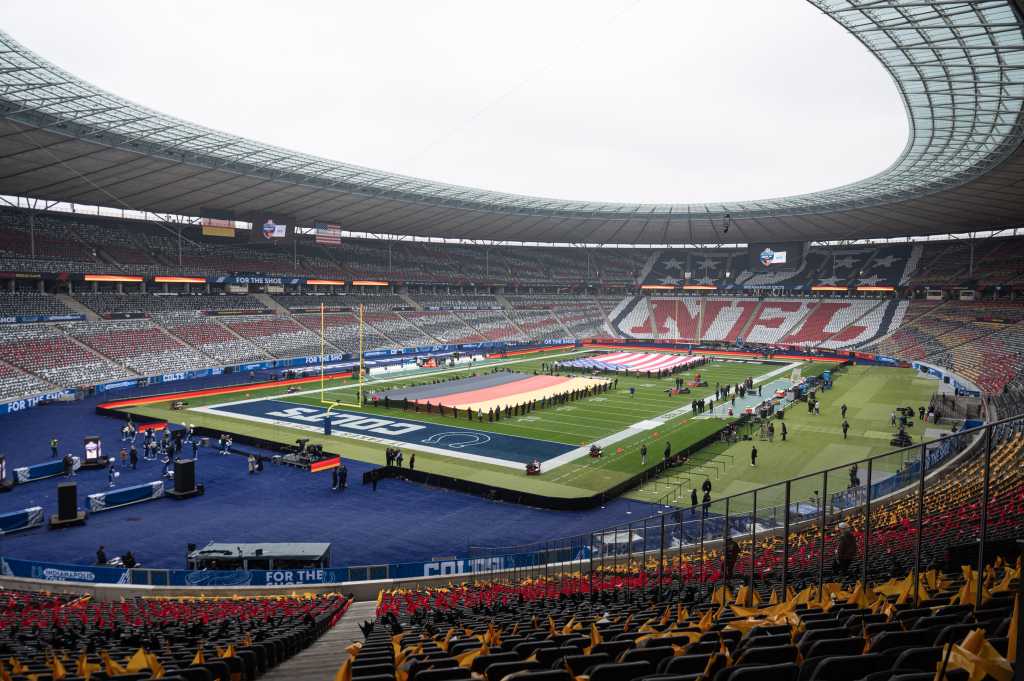
- AWS Next Gen Stats: Initially used for player participation tracking (replacing manual photo-taking), Next Gen Stats uses sensors to capture center-of-mass and contact information, which is then used to generate performance insights.
- Computer vision: Computer vision was initially insufficient, but the technology has improved greatly over the past few years. The NFL has now embraced computer vision, notably using six 8k cameras in every stadium to measure first downs. This replaced the 100-year tradition of using physical sticks connected with a chain to determine first downs. This blended approach of using sensors and computer vision maximizes data capture for complex plays where one source may not be enough.
- Advanced data use cases: The massive influx of data supports officiating, equipment testing, rule development, player health and safety (e.g., concussion reduction), and team-level strategy/scouting (“Moneyball”).
Generative AI: From efficiency to hyper-personalization
Very quickly, generative AI has shifted from a “shiny new thing” to a mainstream tool focused on operational efficiency and content maximization. Use cases mentioned include:
- Data governance: A key internal challenge is the NFL’s disparate data silos (sensor, video, rules, business logic) and applying governance layers so that Gen AI agents (for media, officiating, etc.) can operate consistently and effectively without needing constant re-tooling.
- Operational efficiency: Gen AI is used to streamline tasks like sifting through policy documents and, notably, in marketing. Campaigns that once took weeks can now iterate hundreds of versions in minutes, offering contextual localization, language translation, and featuring the most relevant players for specific global markets.
- Content maximization: Gen AI is used to create derivatives of long-form content (e.g., TikTok and Twitter versions) efficiently. There’s also innovation in using data feeds to generate automated commentary and context, creating new, scalable audio/visual experiences.
Solving hard-to-solve problems
The NFL/AWS partnership is something companies in all industries should look at as the collaboration has resulted in the ability to solve problems that are challenging or, in some cases, historically unsolvable. Some examples are:
- Scheduling complexity: The NFL schedule, with 26,000 factors resulting in one quadrillion potential schedules, highlights the application of intense compute for complex optimization—a challenge common in manufacturing or logistics.
- Simulation for safety: Kickoffs at NFL games have been something that the league has continually tweaked since it’s the play that has resulted in a high rate of injury. Kickoffs see twice the injury rate and four times the concussions of standard run/pass plays. Simulating 10,000 seasons worth of data allowed the NFL to alter the kickoff format, leading to the lowest concussion rate ever and a 79% increase in kickoff returns by Week 9, demonstrating data-informed safety and game quality improvements. In fact, kickoff injury percentage is in line with typical passing and running plays.
- Fan data consolidation: By structuring and cleaning up over 100 data sources, the NFL increased visibility from 12 million to 70 million fans, enabling better-targeted marketing campaigns that resulted in 2-3x open rates.
Balancing innovation, integrity, and adoption
One of the challenges for all businesses is balancing innovation with privacy and other issues. The league maintains a cautious approach to ensure technology enhances, rather than diminishes, the integrity and quality of the game.
- Maintaining integrity: Automation must not lower accuracy. Technology’s goal is to assist officials with factual, non-contextual decisions (like player count), freeing them up for complex, contextual judgments (like ball control). Over-automating penalties would stop the game and degrade the product. As an example, camera vision could likely detect a penalty on every play but that could create an unwatchable product.
- Ecosystem approach: Innovation requires collaborating with partners. New workflows are presented to broadcasters in a way that benefits the entire ecosystem, showing a scalable, reliable path (like cloud adoption) rather than forcing high-risk, expensive physical infrastructure changes on partners.
- Fan adoption: Getting fans to adopt new innovations, such as using Rapid Recap on Thursday Night Football on Prime Video, which provides viewers with a two-minute highlight reel of the game for those that join late. Data can help the league know which features are attracting fans versus those that are not.
While sports use cases are fun and appeal to a broad set of individuals, the lessons learned apply to all industries. Amendolia talked about keeping an open mind and never being afraid to revisit something. He cited the example of camera vision, where the league once deemed it not useful and moved on to sensors. As the technology improved, the league took another look, and the combination of the two provided more value than one alone. Technology changes faster today than ever before. It’s important to continually understand what’s possible as that will provide the competitive edge all businesses are looking for.


